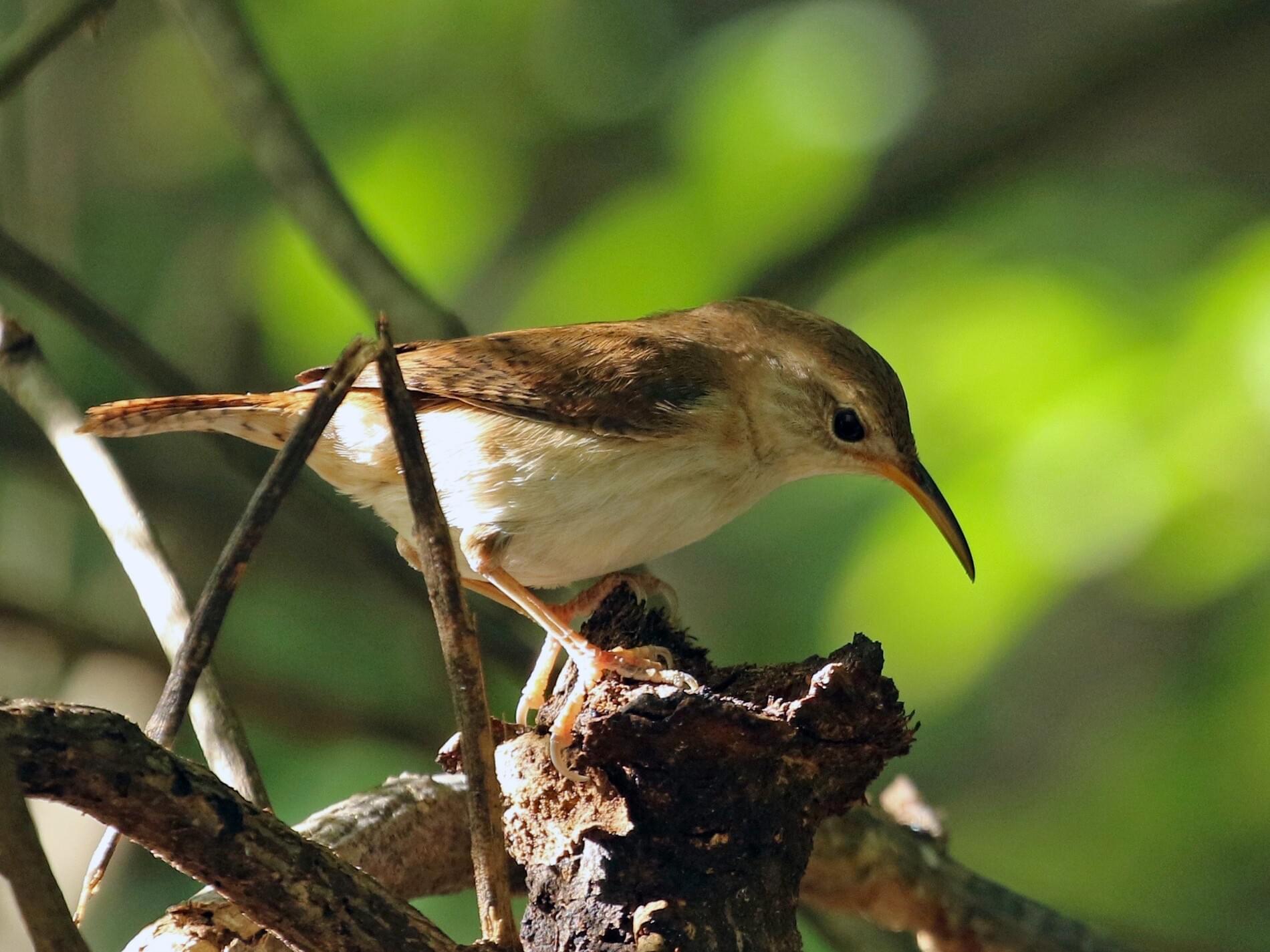
Rock wrens are most often seen in dry, rocky habitats throughout the western United States. The Rock wren ( Salpinctes obsoletus) is smaller and paler than the cactus wren, with only faint spotting on its upper parts and buffy coloration below. The Cactus wren ( Campylorhynchus brunneicapillus) is another large southwestern wren with bold dark spotting on its underparts and a dark throat and broad white eyebrow. They are most often seen along the Pacific Coast and in the southwestern United States. The Bewick's wren ( Thryomanes bewickii) is paler and more grayish than the Carolina wren, with a noticeably long bill.

These wrens are popular guests in the eastern and southern United States year-round. The head is also marked with a broad white eyebrow. The Carolina wren ( Thryothorus ludovicianus) is a larger wren with warm brown upper parts, yellowish underparts, and a white throat. These birds are more northerly and are found throughout the boreal forests of Canada as well as in both the eastern and western United States. The Winter wren ( Troglodytes troglodytes) is darker than the house wren overall, with a notably smaller tail and shorter and more delicate bill. This is a somewhat pale bird with darkly barred wings and a relatively long tail. The House wren ( Troglodytes aedon) is the most common, found throughout the United States.

There are several wrens in North America that can be coaxed to visit yards. The key to successfully attract wrens is to thoughtfully create a bird-friendly yard that offers wrens exactly what they need. The most common backyard wrens in North America can be easier to attract than many birders realize. There are nearly 80 species of wrens in the Troglodytidae bird family and they have diverse preferences. Wrens are feisty, intelligent birds that can be a true delight to see in your yard.


 0 kommentar(er)
0 kommentar(er)
